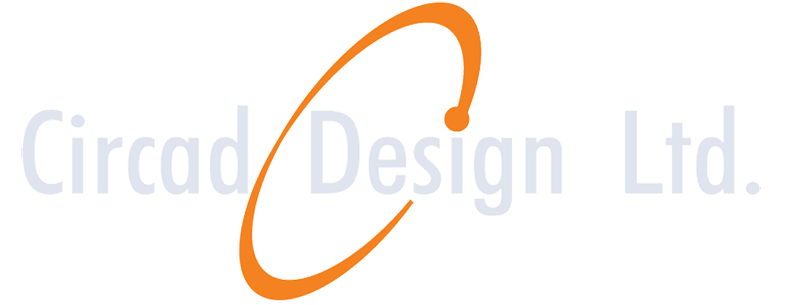How Step Stencils Can Optimise Solder Paste Volumes
In the world of electronics manufacturing, precision is paramount. Each component on a printed circuit board (PCB) must be placed and soldered with exacting accuracy. Achieving this level of precision requires careful control over the solder paste application process, and one critical tool in this endeavour is the step stencil. This article delves into the world of PCB stencils, focusing on step stencils and their importance in optimizing solder paste volumes during PCB assembly. We will also explore how Circad Design, an electronics design and manufacturing company, employs step stencils to deliver value to its clients.
The Role of PCB Stencils
PCB stencils, or SMT stencils, are thin sheets of material typically made of stainless steel or laser-cut polymers with precise cutouts. These cutouts correspond to the solder pads on a PCB. The purpose of a stencil is to facilitate the application of solder paste to the board. When a stencil is properly aligned over a PCB, solder paste is squeegeed through the cutouts, leaving a controlled amount of paste on each pad. This step is critical because the volume and placement of solder paste directly impact the quality of solder joints and the overall functionality of the PCB.
The Challenge of Varying Component Heights
Modern PCBs often feature a mix of surface-mounted components with varying heights. Components like integrated circuits (ICs), connectors, and discrete components may have different heights and therefore demand varying amounts of solder paste. Ensuring that each pad receives the right amount of solder paste is crucial to achieving consistent, reliable solder joints. This is where step stencils come into play.
Understanding Step Stencils
A step stencil, as the name suggests, features multiple levels or steps. Each step corresponds to a specific component height on the PCB. This design allows for precise control of solder paste volumes based on the component's height. By using a step stencil, manufacturers can apply more solder paste to taller components and less to shorter ones, optimizing solder joint quality.
Benefits of Step Stencils
Consistency: The use of step stencils ensures consistent solder paste volume for components of different heights. This consistency reduces the likelihood of defects caused by insufficient or excessive solder paste.
Improved Reliability: Optimized solder paste volumes result in reliable solder joints, reducing the likelihood of solder-related failures, such as cold joints or solder bridges.
Reduced Rework: With proper solder paste application, the need for rework on PCB assembly is significantly reduced, saving time and resources in the manufacturing process.
Cost-Efficiency: Using step stencils eliminates the need for custom stencils for each component height, reducing manufacturing costs.
However, when handlling multi-level board designs, for instance flexi ridged assemblies with components placed on multiple levels, normal stencils have limitations. Circad has made significant improvements to our new machine line and can now simultaneously paste and place components on multilevel boards. Watch our LinedIn video showcasing one of our SMD machines running at 10% capacity!
Circad Design's Approach
At Circad Design, we understand the importance of optimizing solder paste volumes for our clients. We incorporate step stencils into our manufacturing processes to ensure the highest quality PCB assemblies. Here's how we do it:
Comprehensive Component Analysis: Before we start the PCB assembly process, we conduct a thorough analysis of the components on the board. We identify the various component heights and determine the appropriate solder paste volume for each.
Custom Step Stencil Design: Based on our component analysis, we design custom step stencils for each project. These step stencils are precisely crafted to match the height of each component, ensuring the right amount of solder paste is applied to achieve optimal solder joints.
Precision Solder Paste Application: During the solder paste application step, we use advanced SMT assembly equipment and carefully calibrated processes to squeegee the solder paste through the step stencil. This results in consistent and accurate paste volumes for each component.
Quality Control: Quality control is a paramount concern for us. We employ automated optical inspection (AOI) systems to verify the quality of solder joints. This step ensures that each solder joint meets the required standards and is free from defects.
Client Benefits
Our approach to using step stencils has delivered substantial benefits to our clients:
Higher Product Reliability: The optimized solder paste volumes lead to highly reliable PCB assemblies, reducing the likelihood of field failures.
Faster Time-to-Market: With fewer rework cycles and a streamlined manufacturing process, our clients can get their products to market faster.
Cost Savings: Our method of using step stencils eliminates the need for multiple custom stencils, resulting in cost savings for our clients.
Customized Solutions: Each project is unique, and our ability to design custom step stencils allows us to cater to the specific requirements of our clients, even when dealing with complex PCBs.
Conclusion
In the realm of PCB assembly, achieving precise solder joints is of utmost importance. Step stencils play a crucial role in optimizing solder paste volumes for PCBs with components of varying heights. These stencils ensure consistency, reliability, and cost-efficiency in the SMT assembly process.
Circad Design has successfully integrated step stencils into its manufacturing processes, delivering value to clients through customized solutions, improved product reliability, and cost savings. When it comes to PCB assembly, the effective use of step stencils is a practice that can't be overlooked, and Circad Design is at the forefront of harnessing their potential to create high-quality, reliable electronics.
POST SCRIPT: When handling multi-level board designs, normal stencils have limitations. Circad has made significant improvements to its new machine line and can now simultaneously paste and place components on multilevel boards. Watch this LinkedIn video showcasing an SMD machine running at 10% capacity whilst assembling flexi ridged boards with components placed on multiple levels.
Tagged as: SMT, step stencil
Share this post:








